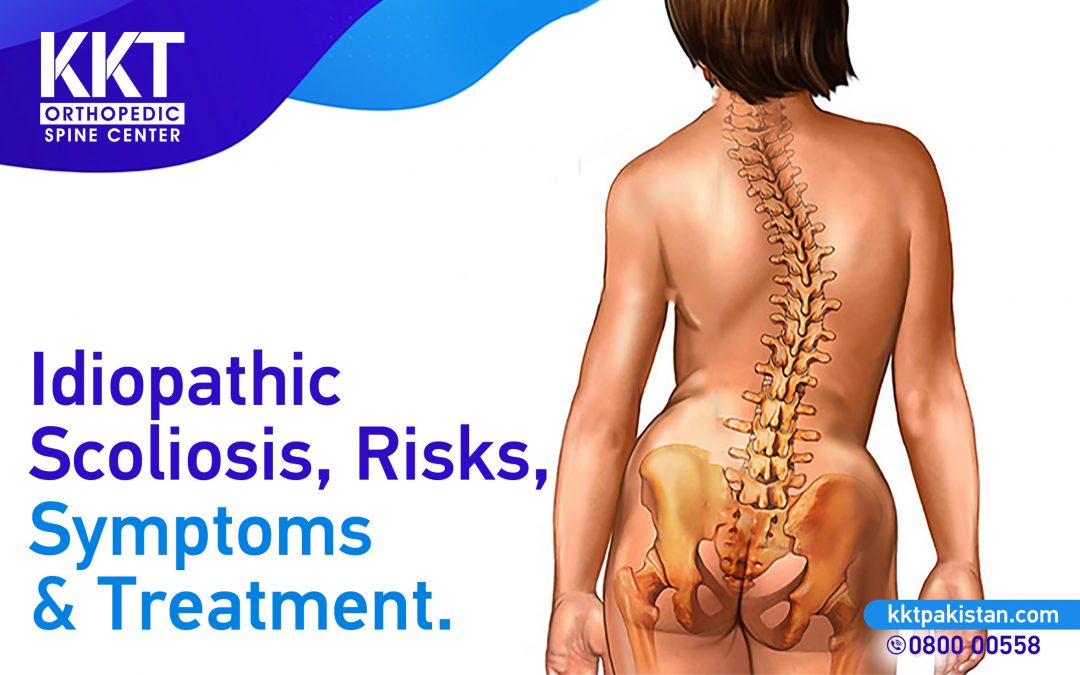In this blog KKT will describe “What is Idiopathic Scoliosis, Risks, Symptoms & Treatment?
The Idiopathic Scoliosis risks, symptoms and treatment varies person to person, depending upon age, sex and severity.
Scoliosis is an abnormal lateral curve of the spine that occurs in children and adults as well. While scoliosis can be caused by conditions such as cerebral palsy and muscular dystrophy but many times the cause of most scoliosis is unknown.
There are actually four types of scoliosis:
1. Congenital scoliosis
2. Neuro muscular scoliosis
3. Adolescent Idiopathic scoliosis
4. Adult denovo scoliosis.
While these different types have different causes and age groups they affect.
We will discuss Idiopathic Scoliosis in detail.
Idiopathic Scoliosis is the type of scoliosis in which instead of growing straight, the spine develops a side-to-side curve, usually in “S” or “C” shape, the bones of the spine are also little rotated.
In many cases the abnormal spinal curve is stable, although in some children the curve becomes more severe over time. It occurs more frequently in girls than in boys. However, mild spinal curvature is equally common in girls and boys.
Mild scoliosis generally does not cause pain, problems with movement, or difficulty breathing. It may only be diagnosed if it is noticed during a regular physical examination or a scoliosis screening at school, or by parents. The most common signs of the condition include a tilt in the shoulders, hips, or waist, or having one leg length discrimination. A small percentage of affected children develop more severe, pronounced spinal curve.
Scoliosis can occur as a symptom of other conditions, including genetic syndromes. However, adolescent idiopathic scoliosis typically occurs by itself, without signs and symptoms and affect other parts of the body.
Symptoms:
Scoliosis includes following symptoms:
1. One shoulder higher then the other.
2. One scapula sticks out more than other.
3. Uneven hip.
4. Curved Spine.
5. Breathing Issues.
Pain in the back.
Treatment:
The treatment options involve:
- Bracing:
Bracing is done in the patients who have the curve of 20 or less then 40 degree. it is more effective in kids. Those requiring braces need to wear it 12-23 hours per day. Its effectiveness increases with increase in the number of hours the wear it everyday.
There are two main types of braces:
1. Underarm Brace
2. Milwaukee Brace - Surgery:
Surgery is done in the people whose curve is greater than 40 degree. Spinal Fusion is a standard process which is done to treat scoliosis. In this process the vertebrae are fused together using bone graft, rods & screws.
Risk of Surgery :
1. Failure to heal.
2. Infection.
3. Pain.
4. Spinal Cord Damage.
5. Nerve Damage.
6. Excessive Bleeding. - Non Surgical Treatment:
KKT is the best non surgical process for those who have Scoliosis in early stages, no risk of spinal cord damage, no progress in curve but have pain. It treats the external appearance of a person with scoliosis.
Outcome:
It can be difficult to live with scoliosis. If you’re looking for help in managing your scoliosis, you may want to find out a group of people suffering with the same problem and by doing so you will be able to find encouragement and advice about dealing with the condition on a daily basis.
https://kktpakistan.com/congenital-scoliosis-symptoms-causes-treatment/
https://www.ncbi.nlm.nih.gov/pmc/articles/PMC7052396/

